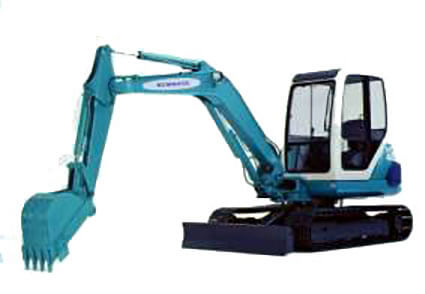1990
While equipment built to accommodate urban environments, by generating less noise, vibrations and emission, became more common, super sized equipment that could withstand harsh working conditions in places like giant mines were also developed.

Mini shovels were very popular during this time, and their sales exceeded those of hydraulic shovels. This model was developed in the heat of competition. It used a rounder shape, and more glass was used for the cab to achieve wider visibility. The rubber feet to prevent street damage and noise reducing specs were more desirable for the urban environment.
Weight: 4385kg, Bucket capacity: 0.14m3
Hydraulic excavator
Since its first emergence in 1951, it took only 50 years for the hydraulic shovel to establish its primary position on construction sites worldwide. Its size ranges from mini to super size depending on the scale of construction, and during the half century, it kept evolving by achieving a minimum rear-swing radius and adapting styles that would work with characteristics of each site. Mirroring the movement of a human hand, a hydraulic shovel will continue to evolve during the 21st century.